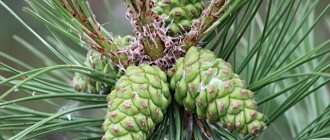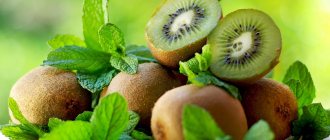Useful properties of turnips
Considering the rich elemental composition of the vegetable, it is not surprising that its beneficial properties have an extremely beneficial effect on the body. In particular, turnips:
- normalizes peristalsis and helps relieve constipation;
- increases gastric secretion - turnip is of great benefit for gastritis with low acidity;
- helps remove excess substances, toxins and retained fluid from the body;
- has a disinfecting and anti-inflammatory effect;
- has a good effect on the reproductive system;
- helps get rid of discomfort due to joint diseases;
- cleanses the blood;
- Serves as an effective prevention of cancer.
There are several types of vegetables - root vegetables are distinguished by color. In some varieties, certain beneficial properties may be more pronounced than in others.
Yellow
The health benefits of yellow turnips lie in its powerful anti-cold properties - it fights any infections, strengthens the body's resistance to viruses, and is also good for periodontal disease. The yellow vegetable is a valuable remedy for edema; when you consume turnips or drinks based on them, excess liquid ceases to be retained in the body.
Yellow root vegetables are most often used for cosmetic purposes, since they are the most effective for the skin.
Black
Black turnip is very useful for coughs, as it is a natural mucolytic and promotes the removal of phlegm. It also helps with toothache and other inflammations. The vegetable is often used for weight loss, to prevent joint ailments and to fight fungus and infections. In general, black vegetables are considered the most beneficial for the body of all turnip varieties.
White
White turnip is ideal for normalizing metabolism - it speeds up metabolism, helps eliminate toxins and waste, and helps quickly lose weight. With the help of a white root vegetable, you can also fight swelling, since excess liquid quickly leaves the tissues when eating a vegetable.
Green
Green turnips effectively help solve problems with the intestines and stomach. The list of its advantages also includes a beneficial effect on blood vessels - the product reduces the risk of atherosclerosis. The green vegetable normalizes blood pressure and strengthens the heart, promotes good brain function.
Use for weight loss
There are no special diets based on turnips, but nutritionists recommend using it when losing weight. This is understandable, because it contains few calories, so it does not add weight, but on the contrary, taking into account its ability to speed up metabolism, it reduces it. You need to eat turnips for weight loss as often as possible, replace nutritious dishes with them, such as potatoes, and it is useful to alternate boiled root vegetables with fresh ones.
The benefits of turnips for women and men
Representatives of the fair sex value the product primarily for its dietary properties. This vegetable can be included in almost any diet and achieve quick results in losing weight - despite the fact that turnips are not a delicacy and are affordable for everyone. In addition, the benefits of turnips for women include a positive effect on the skin and hair.
Vitamins and antioxidants in the product, as well as a beneficial effect on the blood, help women endure menstruation periods more easily - and help cure gynecological diseases.
As for the benefits of turnips for the male body, with constant use, turnips protect against cancer and prevent the development of atherosclerosis. This is especially important because men are more susceptible to heart and vascular diseases. Turnip has a positive effect on potency and libido, since the vegetable improves blood circulation in general.
Growing and storing turnips
With proper planting and care, the plant gives a bountiful harvest:
- Sow on light soil. In the fall, wood ash is added to the garden bed, potash fertilizers are 15 grams per square meter, nitrogen and phosphate fertilizers are 10 grams each. The vegetable does not like to be planted in places where other cruciferous vegetables grew before it. Fresh manure is not used as fertilizer. The soil in the garden bed is compacted. The culture is cold-resistant; seeds can be sown in early spring.
- Furrows are made in the bed 1 cm deep, the distance between the rows is 15-25 cm. Place 2-3 seeds per hole, planting spacing is 10-15 cm. The furrows are sprinkled with earth, mulched, and the bed is covered with film. After germination of the seedlings, the coating is removed.
- The plant needs abundant watering. In hot weather, water consumption per 2 meters of plantings is 20 liters. The plantings are weeded, loosened, and treated against pests.
- Choose healthy, smooth fruits for storage. The tops are cut off. The product can be stored in the refrigerator for 2 weeks. Winter storage - vegetables without tops are buried in sand and stored in a cool, dark place at 0-3°C. Can be stored until the next harvest.
Dear readers, do you grow this healthy, tasty vegetable? What health recipes do you know?
Is it possible for pregnant and lactating women to turnip?
The benefits of turnip dishes are unconditional for pregnant women - the vegetable contains a lot of valuable minerals, vitamins and acids. The properties of the product contribute to the normal formation of the fetus and support the health and well-being of the mother. The vegetable serves as an excellent preventive and therapeutic agent for colds - this is important for pregnant women, since most pharmaceutical medications are contraindicated during pregnancy.
The vegetable relieves inflammation and also helps maintain the beauty of hair and skin. If there is no allergy, then you definitely need to consume turnips in one form or another while carrying a child - albeit little by little.
But during lactation you should give up the vegetable - at least for the first few months. It can harm the baby if it causes an allergy. In addition, the product is unlikely to be digested by the baby’s delicate stomach even through mother’s milk - the baby may have colic or intestinal disorders.
Composition and calorie content of turnips
1. Proteins; 2. carbohydrates; 3. sitosterol, campestrin and so on; 4. carotenoids, such as lycopene and others; 5. fatty acids; 6. anthocyanins; 7. thioglycosides; 8. isothiocyanine compounds.
The vegetable contains both carotene (provitamin A) and B vitamins - B1, B2 and B5, B6 and B9, as well as K, C and PP, in addition to which it contains a lot of fiber necessary for our digestion.
Turnips contain various salts, potassium, iron, sulfur, iodine, manganese, calcium, phosphorus and much more. There are also essential oils that give turnips a special smell.
The calorie content of turnips is 30-32 kcal per 100 grams of product.
At what age can turnips be given to children?
You can offer your child a vegetable for the first time after 8 months of life, provided that the baby’s intestines are generally healthy. It is not fresh root vegetables that should be introduced into complementary foods, but stews, purees or porridge with the addition of vegetables. Raw turnips are allowed for children only after 2 years of age - before that, the child’s body will not be able to absorb the vegetable, and only harm will result.
When consumed correctly, the vegetable will help, first of all, to regulate the functioning of the baby’s intestines - it will improve peristalsis and serve as a prevention of constipation. But the vegetable should not be given to children in too large quantities - this can lead to flatulence and indigestion.
Attention! Since the vegetable can be harmful due to allergies and other reasons, you should consult your pediatrician before introducing turnips into your diet.
The benefits of turnip tops and juice
In home medicine and cooking, not only the vegetable itself is valued. Turnip leaves, as well as the juice obtained from it, have beneficial properties.
- The leaves of the vegetable are often used in preparing decoctions and infusions. The tops have a diuretic and choleretic effect, protect against anemia, and benefit the joints, liver, and organs of vision. The tops contain a lot of calcium, sulfur and iron. The benefits of turnip leaf are great - this is a special type of vegetable, which is also called salad, since its main value lies precisely in its thin, juicy and vitamin-rich leaves.
- The juice obtained from fruits and tops is very rich in vitamins and organic acids. It is recommended for use in case of “sluggish intestines” - the product can serve as an excellent prevention of constipation. The juice cleanses the blood, helps the liver in its work, has a slight tonic effect, and also dissolves small stones in the kidneys and strengthens teeth and bones.
Advice! Not everyone likes the taste of juice, but to make it more pleasant, you can add a little honey to the drink.
The use of turnips in folk medicine
There will be benefits from turnips, even if you use it only for culinary purposes. But in addition, the vegetable can be used for the targeted treatment of many diseases - the healing properties of turnips are used in many folk recipes.
For colds and coughs
The vegetable, which has anti-inflammatory and expectorant effects, will help quickly reduce fever and get rid of dry cough. Two recipes are popular.
- A decoction is prepared from the fruits to promote expectoration of sputum. The peeled fruit is grated on a fine grater, fresh juice is squeezed out of the resulting pulp, and then placed in a water bath in a small container and brought to a boil. After this, the broth is removed, cooled to a warm state and honey is added. You need to drink the product four times a day, 1 large spoon. The medicinal properties of turnip will quickly eliminate the fever, and a dry cough will be replaced by a wet one, more productive from the point of view of recovery.
- For cough and fever, you can also prepare a healing infusion. The vegetable is peeled and cut into small pieces, poured into a jar and filled to the top with boiling water. The drink is infused for 6 hours, and then it is drunk cooled, 2 large spoons - three times a day.
To increase potency
Turnip is an excellent remedy for improving libido and potency. To restore normal sexual activity, you can simply eat fresh or stewed vegetables daily as part of other vegetable and meat dishes.
However, more often, to increase potency, men take healthy vegetable seeds - 1 teaspoon once a day. The seeds can be eaten simply as a medicine, or you can add them to regular food.
From high blood pressure
The vegetable lowers blood pressure, so it is extremely useful for hypertensive patients. You can eat it fresh, but turnips will be much tastier if you steam them until they become soft. The finished vegetable is seasoned with liquid honey; it is also useful to add some citrus fruits - for example, orange slices.
Important! Hypotonic people should consume the vegetable carefully so that turnips with chronically low blood pressure do not cause additional harm.
For diabetes
The vegetable helps lower blood sugar, improves metabolism and supports pancreas health. Therefore, it is very useful for diabetics - regular consumption will help avoid a number of unpleasant complications of diabetes. The vegetable has a low glycemic index, and plant sugars are not harmful and do not lead to a sharp increase in glucose levels.
If you have diabetes, it is better to eat vegetables in processed form. If you have increased stomach sensitivity, boiled or steamed turnips will be digested much easier and will definitely not cause harm to the body.
For toothache
Healing turnip decoction is good for relieving toothache.
- In order to prepare the drink, you need to grate the turnips and boil the pulp for a quarter of an hour.
- After this, the broth is filtered and allowed to cool to a warm temperature.
It is not necessary to take the product internally; it is enough to rinse your mouth several times a day. The healing properties of turnips will relieve inflammation and reduce pain. Since turnip has anti-inflammatory properties, it will help eliminate the very cause of toothache.
For cystitis
The beneficial properties of the vegetable will help relieve inflammation during cystitis and eliminate discomfort. It is necessary to squeeze fresh juice from the fruits and tops, then boil it over low heat for 5 minutes, and then take a couple of tablespoons three times a day.
For liver diseases
The vegetable is allowed for consumption in case of liver diseases - although in small quantities, in order to avoid harm. It has a cleansing effect on the blood and internal organs, promotes the elimination of toxins, therefore it takes over some of the functions of the liver and facilitates its work.
For hepatosis, hepatitis and other ailments, it is best to regularly consume not fresh root vegetables, but steamed or stewed turnips. It is better absorbed by a weakened body, and there is much less risk that the vegetable will cause harm.
For frostbite and gout
The properties of the vegetable are also beneficial when used externally - an ointment is made from it, which is good for gout, joint diseases and skin lesions. The product is prepared like this: the pulp is cleaned and grated, and then goose fat is added to the grated pulp, and the fat should be 2 times less. Mix the ingredients and apply homemade ointment to the affected areas of the skin and sore joints.
Useful ointment heals burns and small cuts well. For greater effect, you can not only smear the sore areas several times a day, but also make compresses, leaving them for several hours or all night.
What is a turnip?
The scientific name of turnip is Brassica rapa var. Turnips are a type of root vegetable grown in temperate climates around the world. Typically, turnips have a white skin, sometimes with a purple or red tint, and white flesh. Greens grow above the fruit and can also be eaten in place of other leafy vegetables such as spinach or kale.
Turnips can be eaten raw, pickled, boiled, fried, grilled or stewed. The taste of turnips is mild but bitter. Often in recipes, turnips are used in the same way as potatoes.
Turnips are low in calories, but high in fiber and a large number of other important micronutrients. Benefits of turnips include improved immunity, heart health, weight loss, and healthy bowel function. According to some studies, turnips also contain anti-cancer compounds and are even associated with a reduced risk of cancer.
Turnip in home cosmetology
The beneficial properties of the vegetable are used not only in cooking and medicinal recipes. Turnip is also found in folk cosmetology - its vitamins, minerals and valuable acids have a very beneficial effect on hair and skin. If you make face and hair masks based on vegetables at least twice a week, the effect will appear very quickly.
For hair beauty
If your hair has become too dull, weak and has begun to fall out, you should resort to strengthening turnip-based masks. For example, the following remedy is often used:
- 4 large spoons of turnip juice are mixed with a teaspoon of onion juice;
- add a large spoon of burdock oil;
- mix and rub into the head near the hair roots.
You need to keep the mixture for half an hour, and then you will need to wash your hair thoroughly. Therefore, it is most convenient to make a mask shortly before the planned shampooing. It is recommended to repeat the procedure at least twice a week - then shine and strength will return to your curls faster.
Turnip will help correct the situation with too oily hair. For example, you can use this simple mask:
- grate some fresh turnips on a fine grater;
- distribute the resulting mixture over your hair and gently rub into the scalp;
- wrap your head with film and a towel on top.
Keep this mask for about half an hour, and then wash it off with light shampoo. With constant use, turnip regulates the production of subcutaneous fat at the hair roots - and allows you to solve the problem of greasy, quickly dirty curls.
Face masks
Turnip is an excellent facial cleanser. Most often, the vegetable is used to eliminate acne, slightly tighten the skin and remove fine wrinkles. But turnip also has a moisturizing effect and normalizes the level of subcutaneous sebum production.
For comprehensive care of facial skin prone to irritation and acne, use the following mask:
- the peeled vegetable is steamed and then crushed to a puree;
- add a teaspoon of olive oil or low-fat sour cream to the soft puree;
- mix thoroughly and spread over the skin for about a quarter of an hour.
Recommended reading: Benefits and how to take olive oil
After the mask is washed off, it is recommended to wipe the skin with a cotton pad soaked in mineral water. If you use this useful product regularly, your skin will become more elastic and smooth, and problems with acne and irritation will gradually disappear.
Another mask designed for dry sensitive skin is also popular.
- 2 large spoons of turnips, crushed to a pulp, mixed with an equal amount of vegetable oil - either sunflower, olive or burdock is suitable.
- Add a large spoonful of liquid honey to the mixture and stir until the product becomes homogeneous.
- The mask is applied to the face and kept for a quarter of an hour.
Turnip and oil tone and moisturize the epidermis, and honey evens out the complexion and significantly softens the skin. It is best to apply the homemade composition to your face about 3 times a week - then the effect will be stable.
Recipes for making decoction, ointment, turnip juice
- Decoction.
First, the root vegetable is chopped, then 2 tablespoons of the chopped culture are poured with 1 glass of boiling water, everything is put on the fire and boiled for 15 minutes, then infused and filtered.
- Juice.
You need to squeeze the juice out of fresh turnips, add honey or sugar, let it brew for an hour, then drink 1 tbsp. 3 times a day.
- General poultices.
After steaming, the turnip is kneaded to a paste for applying applications to the affected areas.
- Ointment.
Raw turnips are ground and mixed with animal fat 2 to 1, the mixture is used to lubricate painful areas.
- For joint pain.
Compresses will help here, first the root vegetable is boiled and kneaded, and then the warm pulp should be applied to the damaged area, apply a film, then insulation, and keep the compress for about three hours.
What can you cook from turnips?
Of course, we should not forget about the culinary purpose of the vegetable - there are many healthy and tasty turnip dishes. Most often, turnips are used as part of salads; turnips are served as a side dish for meat, cereals and fish; sometimes a boiled or steamed vegetable can serve as a separate dish.
Steamed turnips
A dish that is especially popular and the first that comes to mind when thinking about this vegetable is the classic steamed turnip. It is not difficult to prepare, and the benefits of steamed turnips remain maximum - the volume of vitamins and valuable acids practically does not decrease after heat treatment.
To make steamed turnips, you need:
- wash, peel and cut several small turnips into small cubes;
- place them in ceramic pots and fill with water so that it covers the pieces of vegetable;
- add salt to taste;
- put the turnip pots in the oven for an hour and a half at 180 degrees.
Attention! When preparing the dish, it is important not to pour too much water into the pots, otherwise the turnips will not be steamed, but simply boiled.
Vitamin salad with honey
The benefits of raw turnips are best demonstrated in a tasty and healthy salad. In addition to the turnip itself, you need to take liquid honey and some frozen berries, for example, cranberries or currants.
- Several small root vegetables are thoroughly washed, peeled of their tough skin and cut into thin strips. You can also grate turnips on a coarse grater.
- The berries are slightly defrosted, and then thoroughly mashed with a fork to get more juice.
- Grated turnips are mixed with mashed berries, then sprinkled with sugar to your taste and poured with honey.
This salad will not only delight you with its wonderful taste, but will also serve as an excellent immune booster. It is especially useful to consume the dish in winter. To prepare the salad, you can take any turnip - but most often they use the yellow variety of the vegetable.
Where to find and how to cook turnips
Thanks to their growing popularity, turnips are widely available in most grocery stores and farmers' markets. Check the produce section next to other root vegetables, such as potatoes or radishes, and look for turnips that are small, firm and free of blemishes. You can also find turnips for sale that still have their green tops, which can also be eaten as green leafy vegetables.
You can use turnips in almost any recipe in place of potatoes. Try mashed turnips or bake, boil or steam them for a delicious and nutritious side dish. You can even enjoy turnips raw. Turnips also make a great addition to soups, stir-fries, and stews.
If your turnips still have bright greens attached to the top of the root, you can save them and use them in a salad instead of kale and spinach. Boil or lightly sauté them and add a dollop of olive oil and seasoning to really get the rich flavor of the greens.
Possible harm of turnips and contraindications
Even with all the great benefits, sometimes turnips can be harmful to health. It is strictly not recommended to eat vegetables:
- for acute and chronic gastritis, colitis or stomach ulcers;
- turnip is contraindicated for pancreatitis - it will promote secretion, which is not at all necessary during an exacerbation of the disease;
- for diseases of the thyroid gland;
- for serious problems with the kidneys and urinary tract;
- for severe nervous disorders;
- with complicated forms of diabetes;
- for individual allergies.
It must be borne in mind that turnip is a root vegetable that must be consumed with great caution and in small dosages, especially if we are talking about a raw vegetable. The daily norm should not exceed 200 g of the product - otherwise the vegetable will be harmful, causing heartburn, severe flatulence, diarrhea or allergic reactions.
Contraindications
Turnips are very valuable because of their beneficial properties, but there are also contraindications for including them in the menu:
- Not possible - in case of ulcers, intestinal inflammation, gastritis, enterocolitis.
- For diseases and dysfunctions of the kidneys, urinary ducts, hepatitis.
- Disorders of the pancreas and thyroid gland.
- It is recommended to limit intake to minimal doses for diabetes mellitus.
- Pregnant women can eat 300 grams of vegetables two to three times a week. Not recommended for nursing mothers.
- Children under 2 years old.
- In case of allergy to the product.
Turnip is beneficial, and to avoid harm to the body, you should not take it in large quantities . To avoid problems, it is better to use heat-treated root vegetables.











